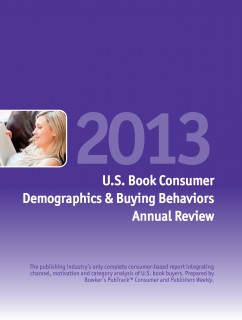 It’s no surprise consumers buy many of their goods online. When it comes to books, the percentage is only getting higher.
It’s no surprise consumers buy many of their goods online. When it comes to books, the percentage is only getting higher.
In 2012, 44 percent of American dollars spent on books went to online retailers—that’s up from 39 percent in 2011, according to Infodocket‘s report on the “2013 U.S. Book Consumer Demographics and Buying Behaviors Annual Review” from Bowker (just $799 if you want to read the whole thing yourself).
Amazon led all online retailers when it came to selling books, which is also not surprising. Borders leaving the industry, in part, has to do with the gain of the online marketplace over brick-and-mortar shops.
However, an interesting aspect was revealed when it came to Barnes & Noble, the second leading retailer of books. According to the report, B&N relied more heavily on print in 2012 than it did in 2011—going against the national trend. E-book spending declined from six percent to four percent from 2011 to 2012.
It’s interesting to note B&N’s decline, because overall the market saw an increase of sales in e-books. E-book spending grew to an 11 percent share, up from seven percent year before. Are consumers shopping other outlets because of the dire news that seems to come from B&N every week? Or is it simply that other retailers, such as Amazon, have been offering better deals?
The report also states that the growth of e-books ranges widely in different categories. Fiction (particularly mystery), romance, and science fiction account for more than 20 percent of 2012 spending.
And yet, traditional print book output grew three percent in 2012, from 292,037 titles in 2011 to 301,642 in 2012, according to the report.
Note: To view an excerpt of the review, or to download a preview PDF, click here.































